PSRAM (Pseudostatic RAM)
HYPERRAM™ - Low pin-count, high bandwidth pSRAM memory in a small footprint
Infineon offers a comprehensive portfolio of HYPERRAM™/Octal xSPI RAM memories with densities ranging from 64 Mb to 512 Mb. With its unique blend of high bandwidth and low pin-count, HYPERRAM™ is ideal for a wide range of industrial and automotive applications that require additional RAM for data-intensive operations. These energy efficient pSRAMs are also the ideal expansion memory choice for battery-operated consumer and wearable devices.
- Small-form-factor of 6 x 8 mm
- Lower pin-count with xSPI/HYPERBUS™
- Energy-efficient with hybrid sleep
- High throughput up to 800 Mbps
- HYPERFLASH™ plus HYPERRAM™ as MCP
- Scalable densities up to 512 Mb
- AEC-Q100 devices with up to 125°C
- Wide eco-system support
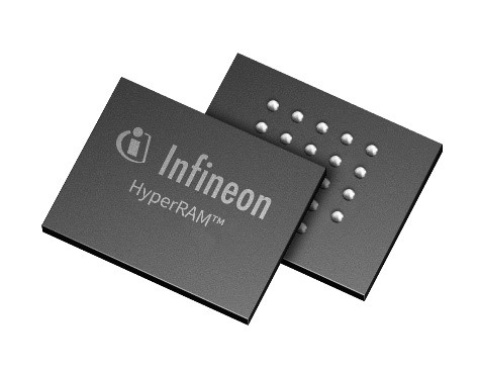
HYPERRAM™ - Pseudostatic RAM (pSRAM) technology
HYPERRAM™ is a high-speed CMOS, self-refresh DRAM, with a HYPERBUS™ interface. Its memory array is internally structured like DRAM, but externally acts like SRAM.
The DRAM array requires a periodic refresh to maintain data integrity. HYPERRAM™ internally manages the refresh operations on the DRAM array when the memory is not being actively read or written by a host. Since the host is not required to manage any refresh operations, the DRAM array appears to the host as static cells that retain data without refresh. Hence, HYPERRAM™ is described as pseudostatic RAM (pSRAM).
These low-power, high-performance, and low pin-count pSRAMs are suitable for applications requiring additional RAM for buffering data, audio, images, video, or as a scratchpad for math and data-intensive operations.
- Density: 64 Mb, 128 Mb, 256 Mb, 512 Mb
- Interface: HYPERBUS™ (x8), Octal xSPI (x8), and HYPERBUS™ Extended I/O (x16)
- Key features:
- Small-form-factor - FBGA package ensures a small PCB footprint
- Low pin-count - simplifies design and reduces system cost
- Low power - hybrid sleep mode and partial-array-refresh for energy efficiency
- High throughput - high read/write bandwidth to maximize system performance
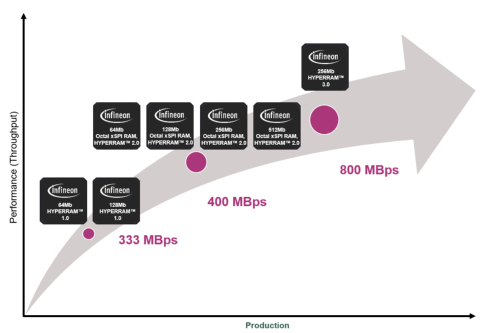
Infineon's HYPERRAM™ family
HYPERRAM™ 2.0 is the second generation of low pin-count pSRAM from Infineon that supports throughputs of up to 400 MBps. HYPERRAM™ 2.0 products are available from 64 Mb up to 512 Mb. HYPERRAM™ 2.0 devices are available with Octal xSPI and HYPERBUS™ interface.
Our third-generation pSRAM products - HYPERRAM™ 3.0, doubles the throughput to 800 MBps using a new, 16-bit, extended version of the HYPERBUS™ interface. 256 Mb HYPERRAM™ 3.0 products are now available in production.
These pSRAM products are industrial/automotive-qualified and support JEDEC-compliant Octal xSPI and HYPERBUS™ interface.
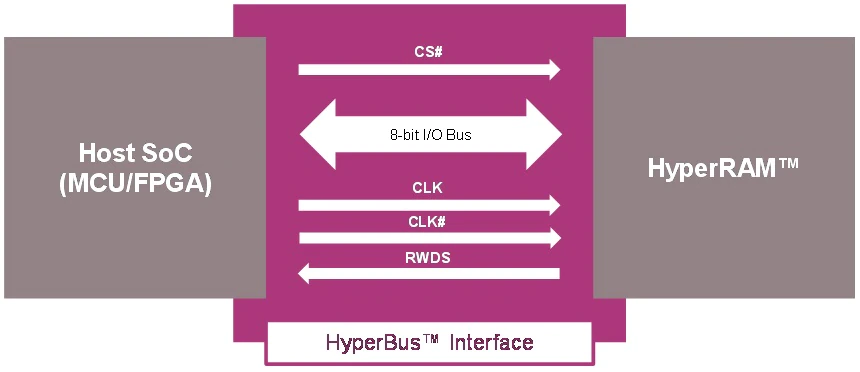
HYPERBUS™/xSPI x8 DDR interface with low signal count
HYPERBUS™ is a low signal count DDR interface that achieves high-speed read and write throughput. It utilizes a high-speed 8-bit DDR interface for both address and data along with a differential clock, a read/write latch signal, and a chip select.
HYPERBUS™ can also support external NOR flash and RAM on the same bus and works with any microcontroller with a HYPERBUS™-compatible peripheral interface. This requires only 13 pins for data transactions (12-pin HYPERBUS™ + 1 additional chip select for the second memory device).
HYPERRAM™ vs. competing expansion memory solutions
HYPERRAM™ products achieve a far higher throughput per pin compared to competing technologies such as traditional ADMUX pSRAMs and SDR DRAMs which are based on a parallel interface. The built-in self-refresh circuitry and low-power features such as partial-array-refresh and hybrid-sleep enable lower power consumption making HYPERRAM™ apt for power-constrained applications such as wearables and IoT devices.
|
HYPERRAM™ devices are used in demanding applications
HYPERRAM™’s high throughput, low pin-count, smaller footprint, and energy efficiency makes it an ideal expansion memory choice for a variety of automotive, industrial, consumer, and communication applications.
- Automotive instrument clusters
- HYPERRAM™ memories provide density-scalability to meet the requirements of different instrument cluster systems. These memory devices provide an ideal solution for real-time graphics and high-speed access. The low-pin count interface also reduces design complexity and PCB size to save on design costs.
- Industrial machine vision cameras
- FPGA used in Industrial applications have limited internal RAM resources and often require low pin-count external memory for image processing. HYPERRAM™ with its lower pin-count and higher density makes it an ideal expansion memory solution. Read more about automotive applications here
Memory Solutions Tech Forum – on demand sessions

Join our Memory Solutions Tech Forum, where industry and Infineon experts highlight new design trends and use cases enabled by Infineon Memory Solutions in automotive and industrial applications.
This forum is specifically designed for the design community, including system architects and design engineers. You gain valuable insights into addressing the challenges of increasing design complexities driven by multiple requirements. Furthermore, the sessions offer solutions to aid in reducing qualification effort, development cost, and time to market.
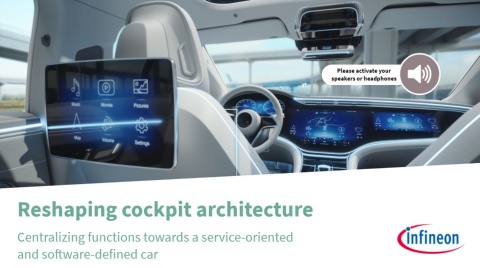
- Understand the evolution of the cockpit architecture
- Recognize the importance of the central modules like head unit and cockpit domain controllers and get to know Infineon solutions and their components
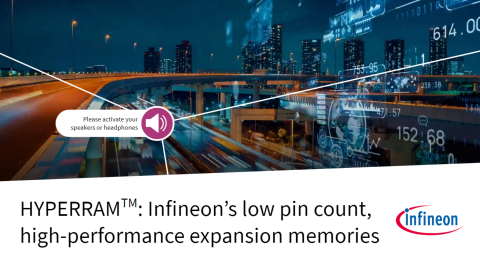
- Understand the need for an expansion memory and recognize the key attributes designers look for
- Describe the challenges with existing expansion memory options

- Understand the key features of RAM offerings, and be aware of the memory solutions applications in automotive
- Know the RAM product portfolio, understand the different types of memories, key applications and use cases

- Know what Industry 4.0 is and the main challenges of high tech challenges in realizing its vision
- Understand the key features of RAM offerings and be aware of memory solutions use cases for the industrial market



